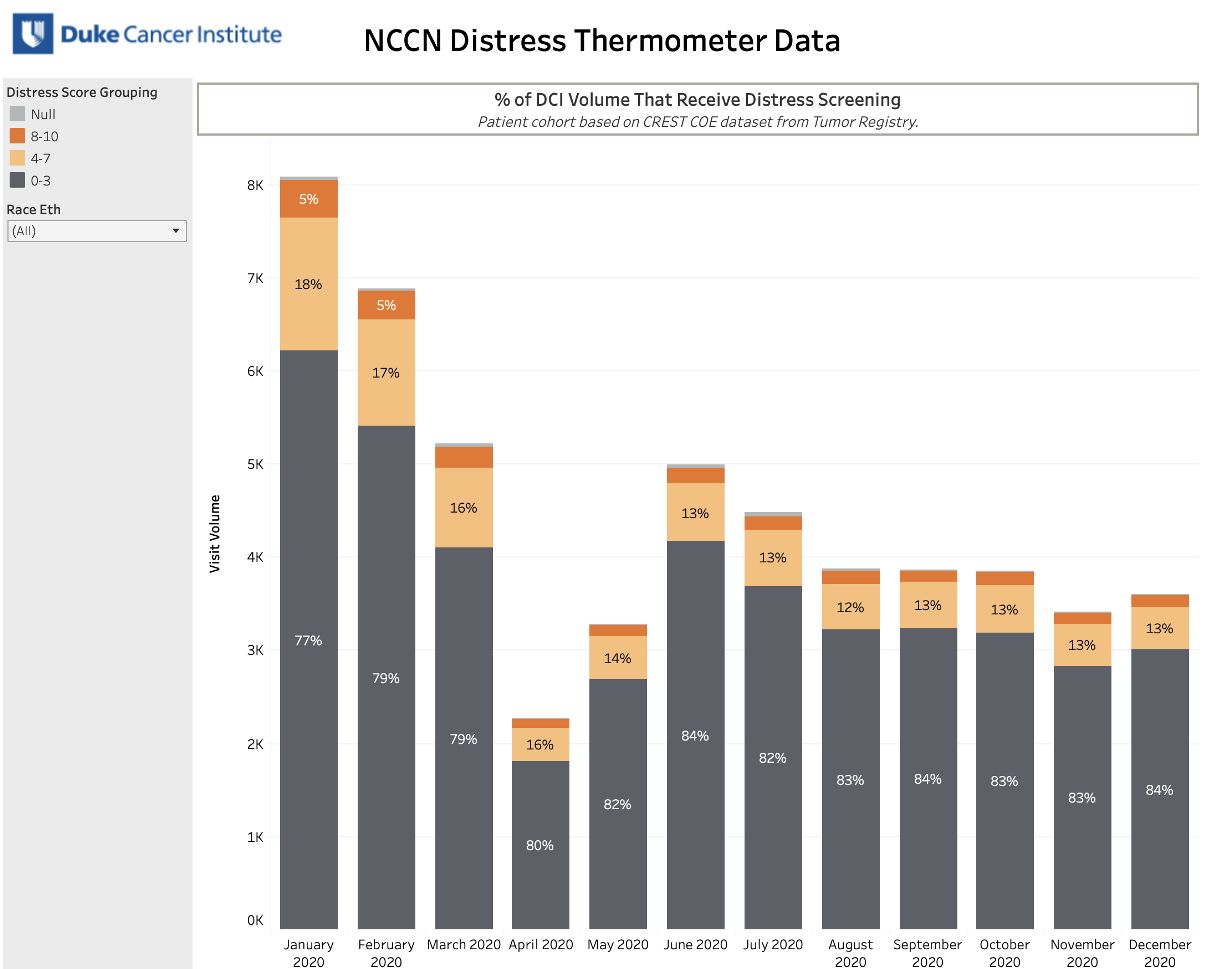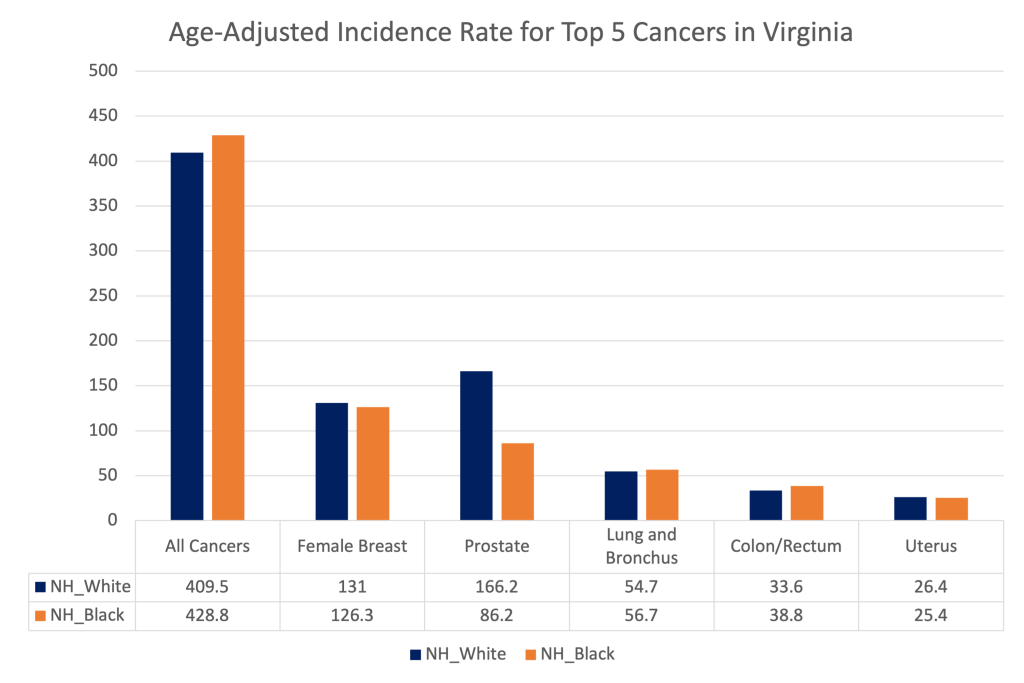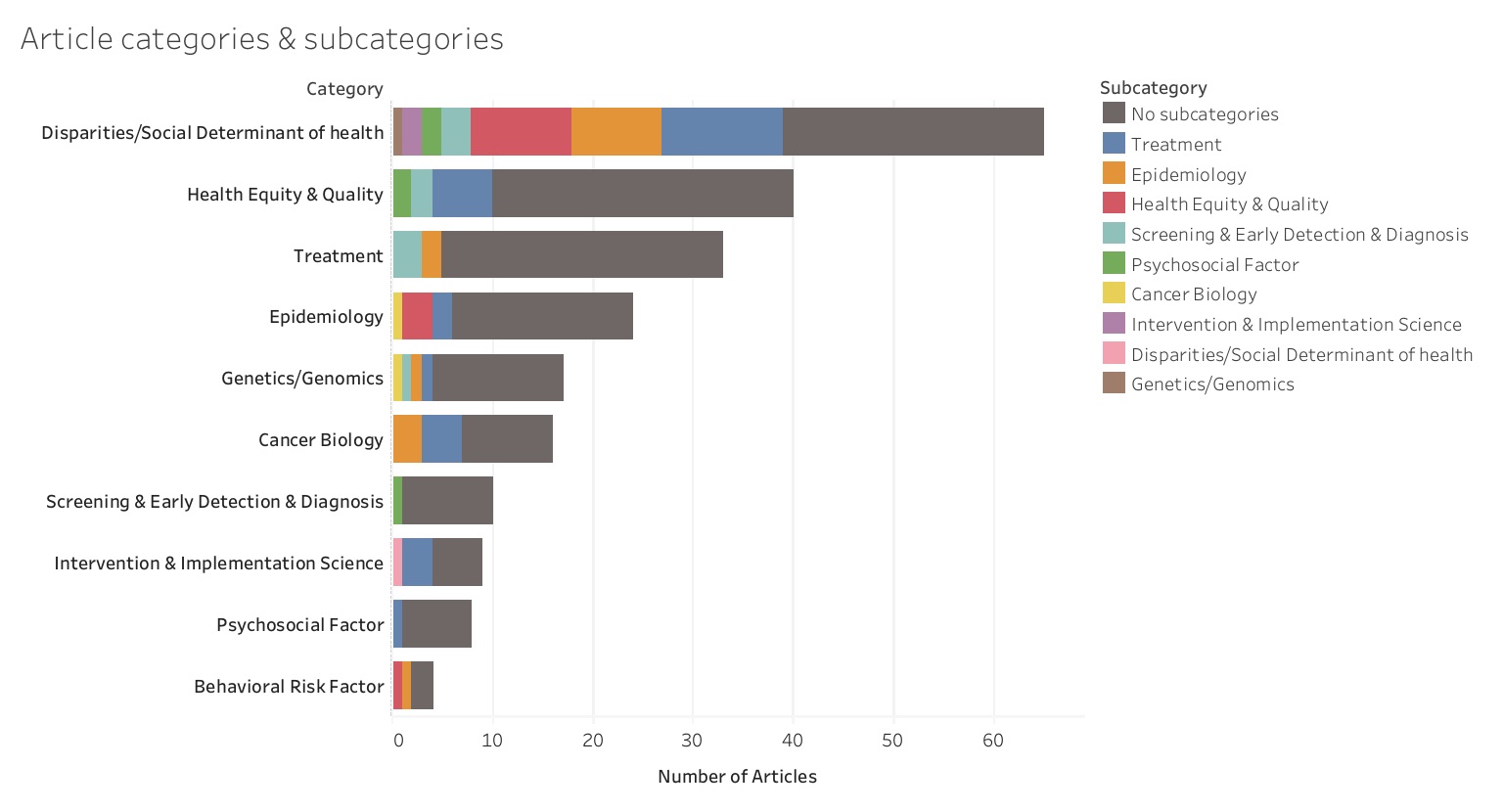OVERVIEW
North Carolina ranks 21st in cancer deaths nationwide, with approximately 20,000 North Carolinians dying of cancer each year. There are complex sets of factors that contribute to this statistic. For instance, North Carolina ranks 38th in HPV vaccination, 38th in smoking, and 44th in avoiding care due to cost. The burden of cancer is also distributed unequally across the State, with certain demographic groups more likely to develop and die from cancer than others.
The DCI catchment area covers a range of rural and urban counties, and represents diverse communities across the race/ethnic and socio-economic spectrum. At DCI, ongoing research and analyses aim to identify communities experiencing disproportionate burden of cancer in order to inform targeted dissemination and implementation strategies (Darker counties: greater number of DCI patients; larger circles: higher poverty)

At DCI, the NCCN Distress Thermometer survey is administered at every visit to patients to help identify patient needs. This information is used to tailor support and navigation services to meet various patient needs, including practical (e.g., transportation, food insecurity, housing, childcare), emotional (e.g., fear, nervousness, worry), and physical problems (e.g., fatigue, pain, nausea)

Black-White Disparity for Age Adjusted Cancer Incidence (AAIR) and Mortality (AAMR) Rates in North Carolina, South Carolina, and Virginia, 2015-2019
Trends in age-adjusted cancer incidence (AAIR) and mortality rates (AAMR) per 100,000 population in North Carolina, South Carolina, and Virginia by the top five cancers in that state and Black & White patients.
Data source : North Carolina, South Carolina, and Virginia Cancer Registry from 2015-2019
Age-Adjusted Rates in North Carolina


Age-Adjusted Rates in South Carolina


Age-Adjusted Rates in Virginia


The top five age-adjusted cancer mortality rates (per 100k) in North Carolina are presented below. Lung/Bonchus, female breast, prostate, colon/rectum and pancreatic cancer are the top causes of cancer deaths in North Carolina.

Socio-economic status also varies by region; higher SES is concentrated in the triangle area, but lowest across Catchment area relative to NC state as a whole.

DCI COEE-Relevant Publications
A systematic review of DCI publications between 2019 and 2020 identified peer-reviewed articles relevant to cancer disparities, catchment area and community engagement. A total of 290 article met the inclusion criteria and were screened using the Covidence software. After review, 255 DCI articles were included as having relevance to COEE and cancer disparities, with over 60 articles related to disparities or social determinants of health. A summary of publications by topics are outlined below

Figure 1: Distribution of COEE-relevant DCI publications by category
Figure 2: Visualization of overlap between DCI publications across categories

